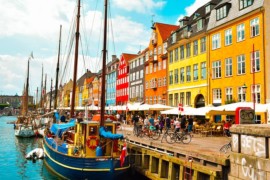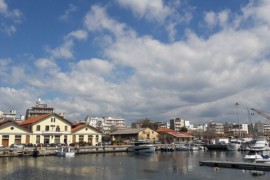What if we told you that in a few years, heating networks could partly use waste water as a raw material? The prospect doesn’t set your pulse racing? And yet this is an ecological, economical and technically reliable heat recovery system, which may soon need to be developed in Europe. Read on for further explanations.
What is the recovery of heat from wastewater?
The temperature of water collected in drains is between 12 ° C and 20 ° C, depending on the season and time of day. Like end energy, heat recovery from waste water is a way of using a previously lost and unused power source.
This technique relates in particular to waste water from appliances that use water heated to high temperature, such as dishwashers and washing machines. Once evacuated, this water retains some of its heat. This can be very useful, since it is estimated that the wastewater produced per 100 inhabitants can be used to heat 10 inhabitants!
A water supply at 60 ° C.
How does it work? Very simply. The water is installed in heat exchangers, which comprises pipes which contain a heat transfer liquid – for example, water mixed with glycol. This fluid heats up in contact with the wastewater and it is then routed to a heat pump. This multiplies the calories and brings the water to a temperature between 55 ° C and 60 ° C.
The system, which should be installed in sewers that have enough speed to allow for thermal recovery, is then connected to a collective boiler – which may, during peak times if necessary, receive another source of energy. NB: The heat pump is often reversible. This means it can produce cold air in summer!
Why recover heat from waste water?
Recovering heat from waste water is a process which has numerous advantages. These advantages include:
- the absence of pollution created by this method;
- the absence of combustion;
- only the heat is transmitted not odours;
The system can be implemented in large buildings (public buildings, schools, sports complexes …) or places of residence, provided that they are within 500 metres of sewers – which, in town centres, includes most places.
Two examples in Europe
There are two examples in Europe of this kind of site which help prove that the recovery of heat from wastewater is a credible alternative to heating networks.
In Austria, the small town of Amstetten (with 23 000 inhabitants) has been experimenting with such a device since 2013. The small municipality initially invested 240,000 euros on their system and they expect to see a return on their investment in eleven years.
In Germany, in Aachen Chappelle (in North Rhine-Westphalia), the beginning of the year saw the construction of Europe’s largest factory using heat from wastewater for heating and water hot. A test is currently underway to provide approximately 120 apartments in four buildings with heating and hot water.
The idea could catch on in neighbouring countries: according to estimates by the German Environmental Foundation, the heat from wastewater could provide four million apartments if the system was brought in across the entire country.







